Although no known asteroid poses a threat to Earth for at least the next century, the database of near-Earth asteroids is not yet complete for smaller bodies that could still cause devastation on a regional scale.
Several methods have been proposed to protect Earth from asteroids on a collision course, including blowing them up with a nuclear weapon and using a ‘gravity tractor’, a large spacecraft whose gravity pulls the asteroid so it misses our planet.
Find out about the ESA Hera mission to study the aftermath
The strategy identified as the highest priority to develop and test, however, is kinetic impact.
In simple terms: fly a spacecraft at high speed into the asteroid so that it is nudged onto a different trajectory.
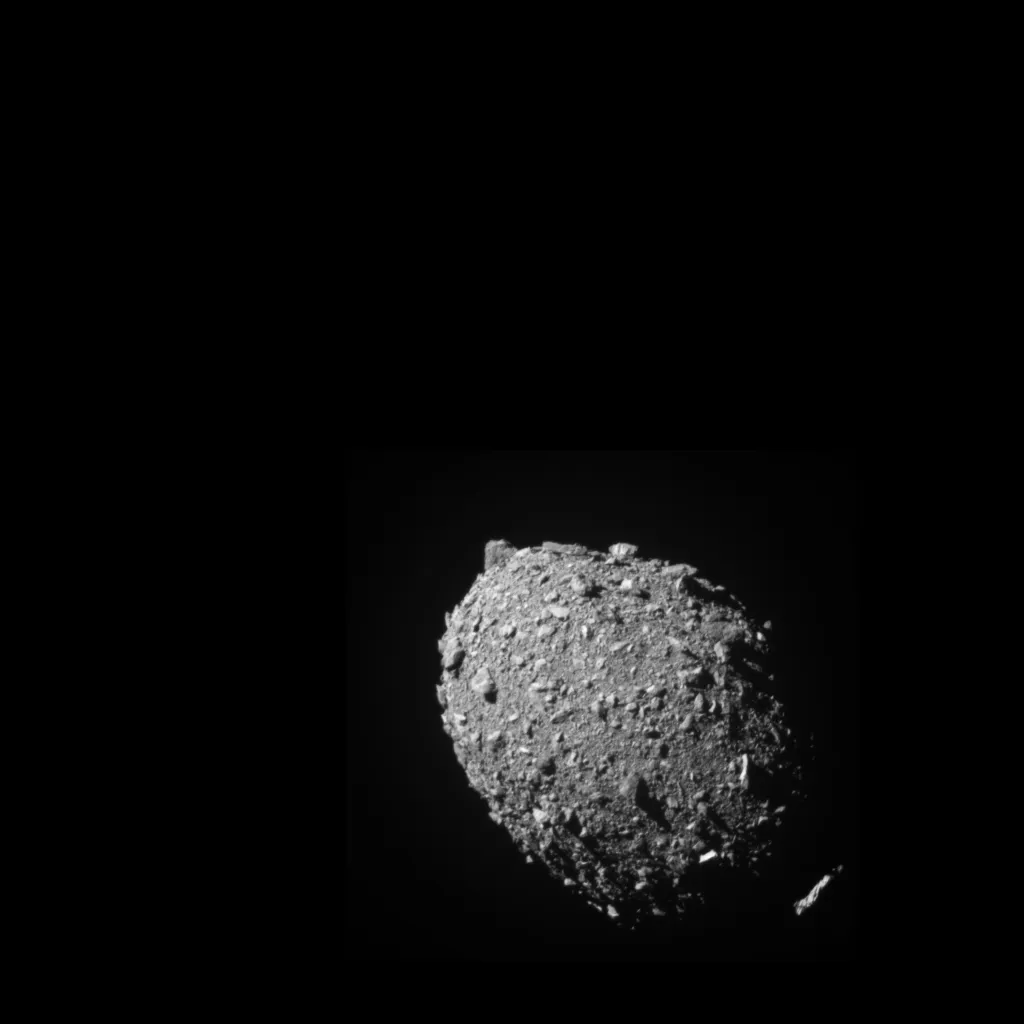
NASA’s DART (Double Asteroid Redirection Test) mission was developed to demonstrate just this approach.
Launched in November 2021, DART successfully impacted Dimorphos, the 160m moon of 800m asteroid Didymos, at just over 22,000km/h at 23:14 UTC on 26 September 2022.
A number of research papers have described what this milestone space mission taught us.
Here I’m focusing on a report led by Terik Daly, Carolyn Ernst and Olivier Barnouin, all at Johns Hopkins University Applied Physics Laboratory, which pieces together the details of the impact itself with astonishing precision.
DART continuously beamed back images from its onboard camera during the approach.
The final full image, taken just under two seconds before impact, shows a boulder-strewn landscape, with a pixel resolution of just 5cm.
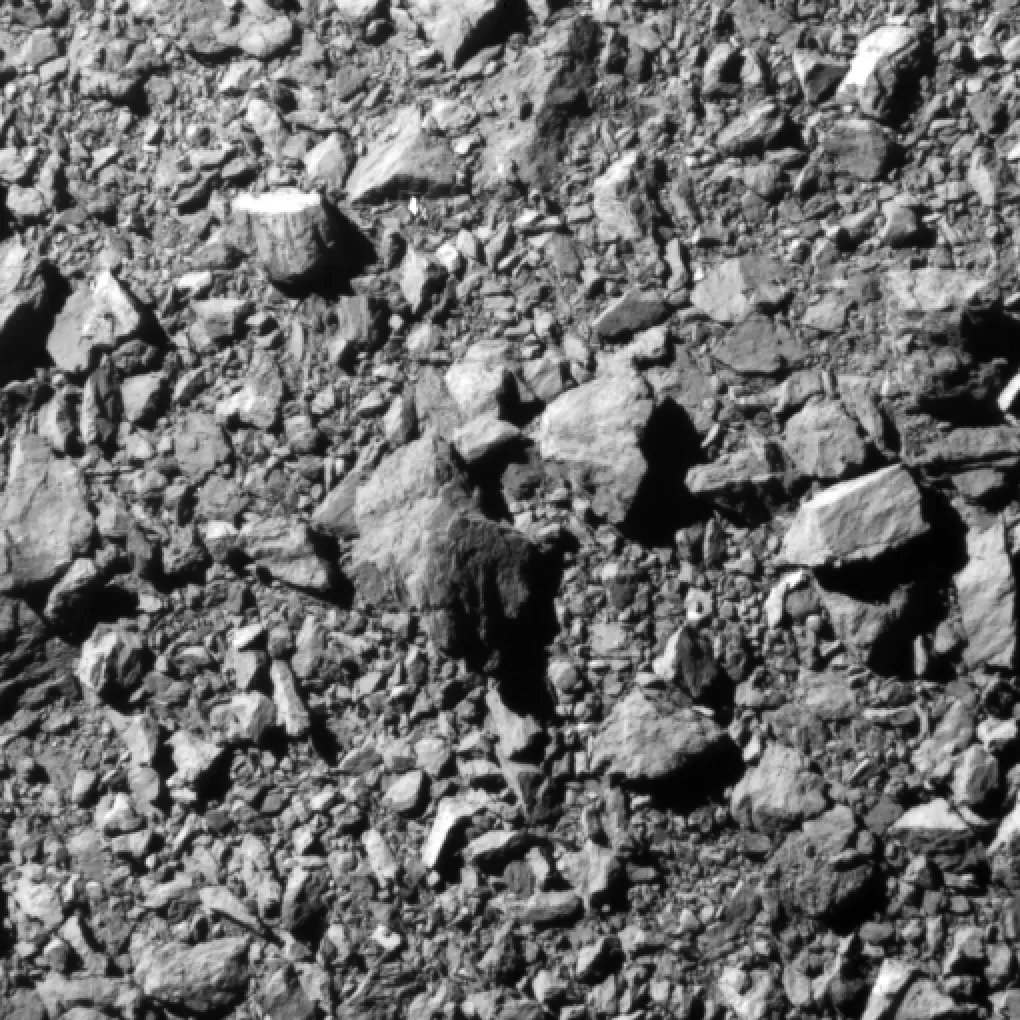
DART impacted in the direction opposite the asteroid’s motion, almost straight down into the asteroid’s surface, at an angle of around 73°.
By analysing the images, the team determined the precise point that DART hit to an accuracy of better than 70cm.
The impact site was within 25m of the equator of Dimorphos: like striking a snooker ball with the cue, the perfect spot to hit to impart the maximum momentum (without ‘wasting’ any of the impact energy in causing the target body to spin).
The final image even allowed the team to model the precise nature of the impact.
Two large boulders can be seen in the centre of the photo, and the team describe how the leading edge of the spacecraft’s left-hand solar panel must have struck one of the boulders.
Almost immediately afterwards, the right-hand solar panel grazed the other boulder, and 0.3 milliseconds later the main body of the spacecraft slammed into the surface between the two.
For the final four hours before impact, DART’s autonomous manoeuvring system controlled the spacecraft’s trajectory to target it directly into the middle of Dimorphos, and this technology proved itself admirably.
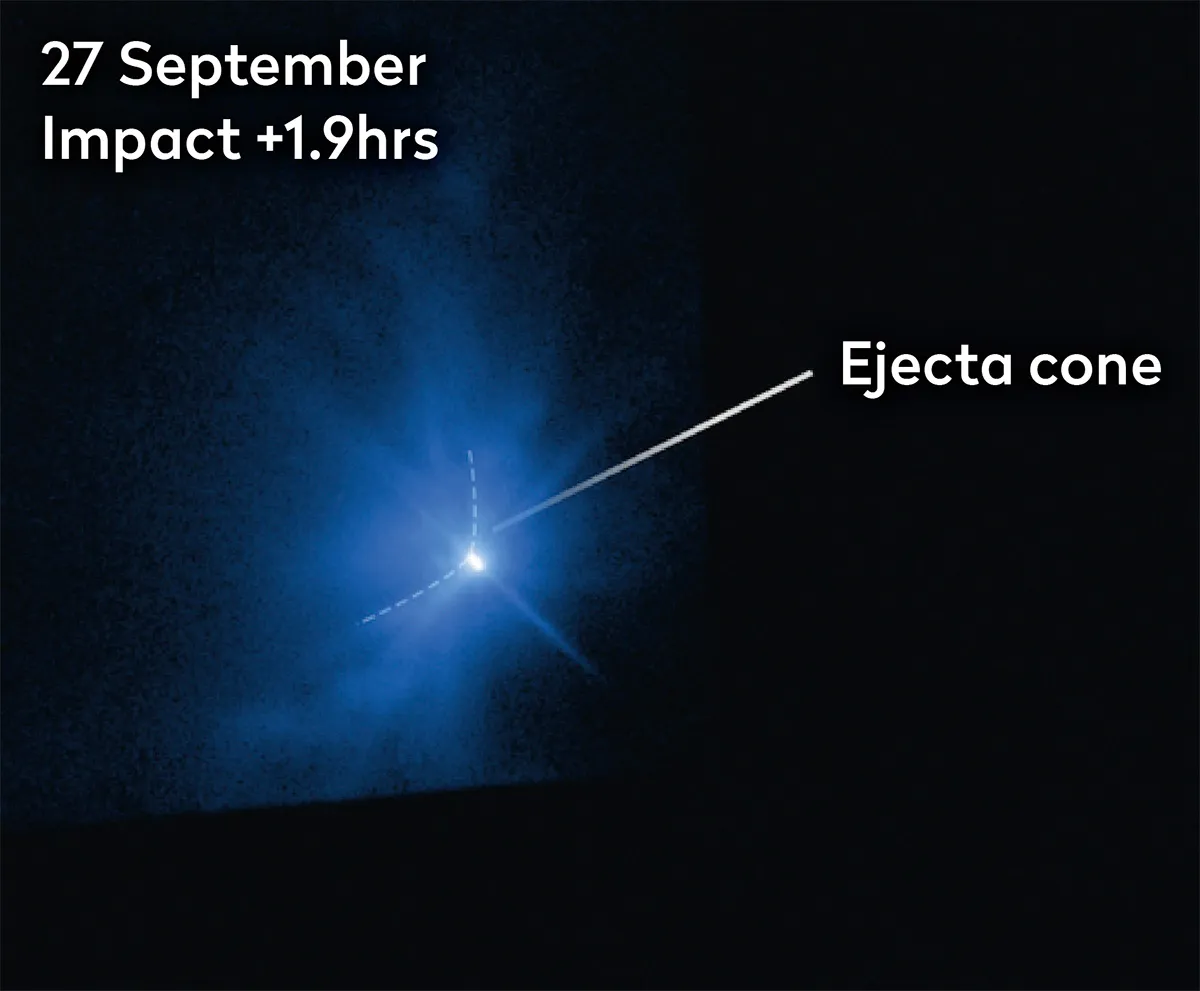
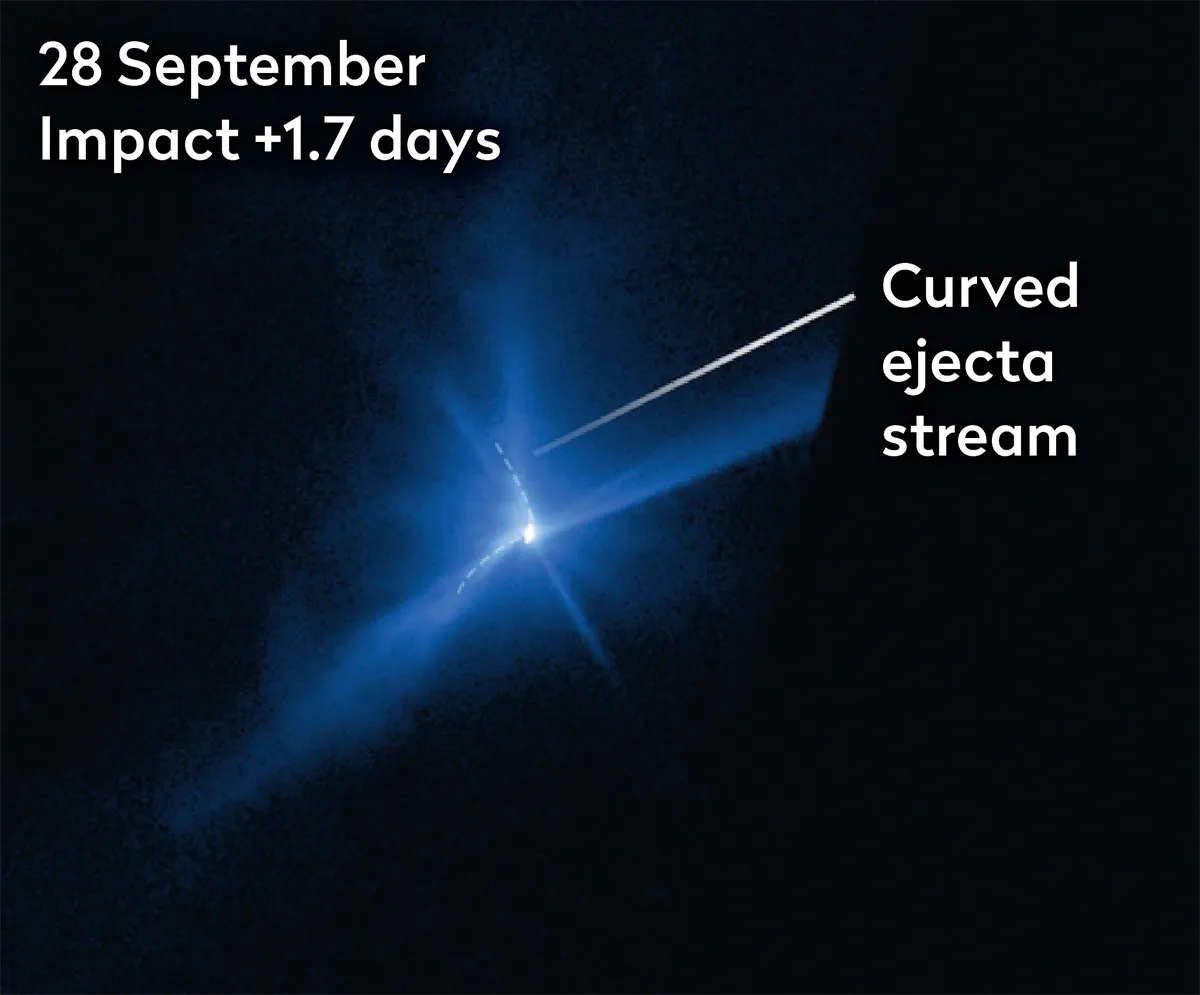
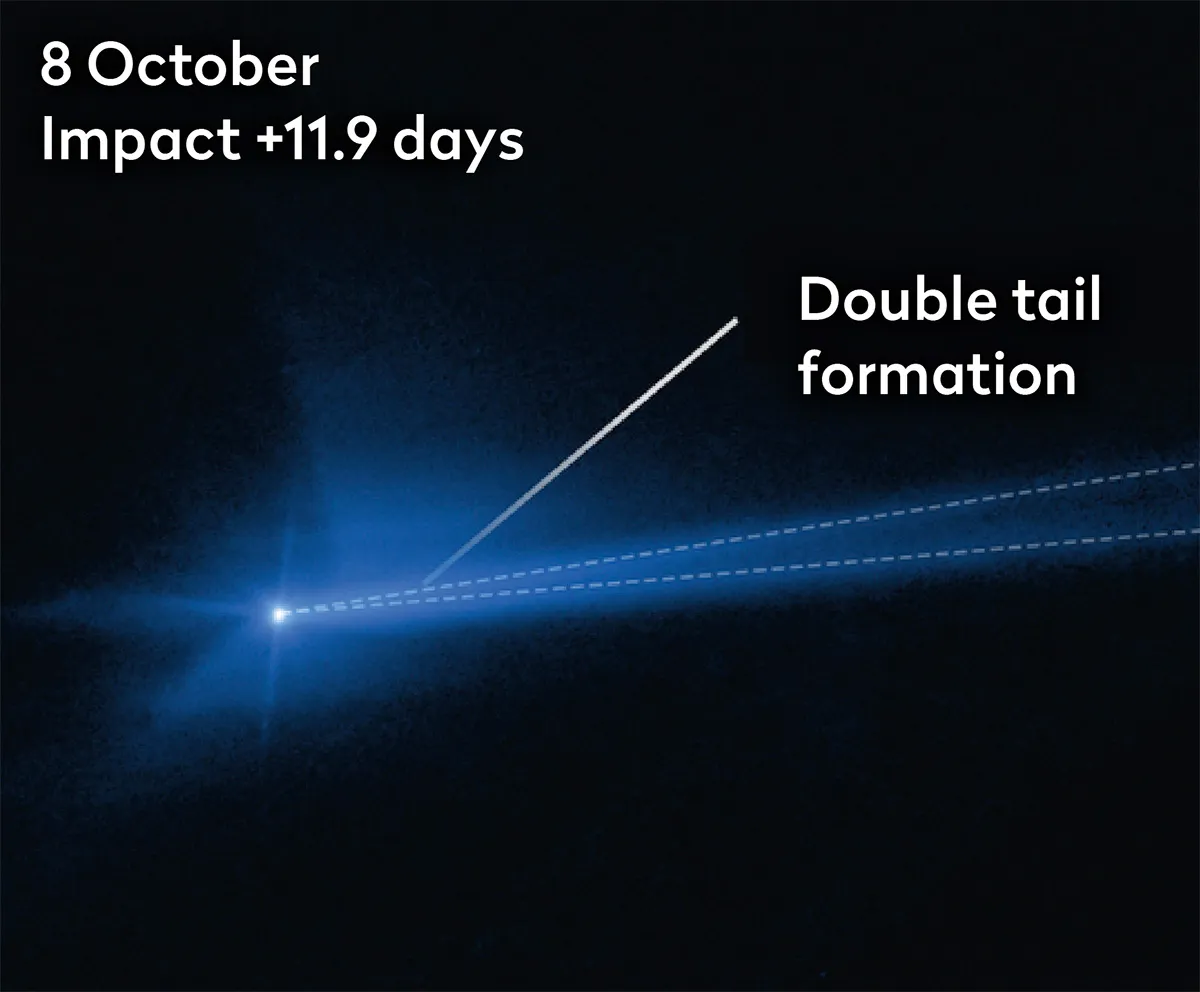
What did the DART mission show us?
The success demonstrates that a spacecraft like DART would be able to deflect an asteroid on a collision course with Earth, without needing a precursor reconnaissance mission.
The impactor could be launched directly to the target itself.
We can breathe a little easier for knowing that should a deadly asteroid be discovered, we’ve demonstrated that a kinetic impactor could protect Earth from the threat.
Lewis Dartnell was reading… Successful Kinetic Impact into an Asteroid for Planetary Defense by R Terik Daly et al. Read it online at: arxiv.org/abs/2303.02248.
This article originally appeared in the May 2023 issue of BBC Sky at Night Magazine.

